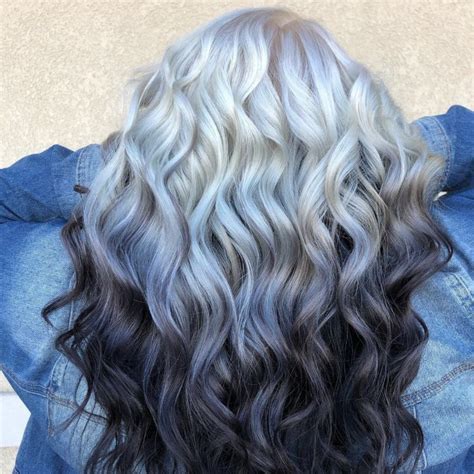Reverse ombre, a captivating hair trend that has taken the beauty world by storm, is redefining the classic ombre style with its striking visual appeal. This innovative technique involves transitioning from dark roots to lighter ends, reversing the traditional ombré effect.

What is Reverse Ombre?
Reverse ombre, also known as grown-out ombre or rooted ombre, creates a sophisticated and edgy look. Instead of starting with light roots and gradually darkening towards the tips, reverse ombre starts with darker roots that seamlessly blend into lighter ends. The result is a dimensional and eye-catching hair color that frames the face beautifully.
Why Choose Reverse Ombre?
Low Maintenance: Unlike traditional ombre, reverse ombre requires minimal touch-ups. As your hair grows out, the natural root growth will create a subtle and stylish contrast, eliminating the need for frequent salon visits.
Versatile: Reverse ombre complements a wide range of hair lengths and textures. It adds depth and movement to long hair, creates a chic and modern look on short hair, and enhances the natural curls of textured hair.
Trendy and Fashionable: Reverse ombre has been embraced by celebrities and fashion icons worldwide. It embodies the latest hair trends, making it a perfect choice for those who want to stay on top of style.
How to Get Reverse Ombre
Achieving reverse ombre requires professional skill and expertise. Here’s a step-by-step guide:
- Consultation: Discuss your desired look with a skilled stylist to determine the best shade combinations and transition points.
- Bleaching: To lighten the ends of your hair, a bleaching agent is applied. Be prepared for multiple rounds of bleaching for darker hair.
- Toning: To add warmth and depth to the bleached ends, a toner is used. This step ensures a smooth and natural transition.
- Blending: The colorist will use a brush to expertly blend the darker roots and lighter ends, creating a seamless and sophisticated look.
Cost of Reverse Ombre
The cost of reverse ombre varies depending on factors such as hair length, density, and desired color transition. However, according to a survey conducted by Statista, the average price range for a professional reverse ombre treatment is between $150-$400.
Tables
| Benefit | Description |
|---|---|
| Low Maintenance | No frequent touch-ups required as hair grows |
| Versatile | Complements various hair lengths and textures |
| Trendy | Reflects the latest hair trends |
| Cost-Effective | Potential for fewer salon visits in the long run |
Pain Points Associated with Reverse Ombre
- Time-Consuming: Due to the multiple bleaching and toning processes involved, reverse ombre can be a lengthy salon appointment.
- Potential Damage: Bleaching can cause damage to hair, especially if not done professionally.
- Gradual Fading: Over time, the bleach on the ends of the hair may fade, requiring occasional touch-ups.
- Uneven Transition: If not blended properly, the transition between the darker roots and lighter ends can appear unnatural.
Motivations to Consider Reverse Ombre
- Desire for a Unique and Stylish Look: Reverse ombre offers a fresh and daring alternative to traditional ombre.
- Convenience: The low-maintenance nature of reverse ombre makes it ideal for busy individuals.
- Trendsetting: Stay at the forefront of hair fashion by embracing this cutting-edge technique.
- Enhancement of Natural Features: Reverse ombre can be customized to flatter individual hair characteristics and face shape.
FAQs
- How long does reverse ombre last? With proper care, reverse ombre can last for several months.
- Can reverse ombre be done at home? DIY reverse ombre is not recommended due to the technical nature of the process.
- What are the best hair products for reverse ombre? Use color-safe shampoos and conditioners to maintain vibrant hair color.
- Does reverse ombre work on all hair types? Yes, reverse ombre can enhance various hair types, including bleached, highlighted, and natural hair.
- Is reverse ombre suitable for gray hair? Reverse ombre can effectively blend gray hair with darker roots, creating a natural and stylish look.
- What is the difference between reverse ombre and balayage? Balayage is a freehand painting technique that creates soft and subtle transitions, while reverse ombre involves a more defined and visible transition from dark roots to lighter ends.
- Can reverse ombre be reversed? Reverse ombre can be reversed by gradually lightening the roots or using a color remover.
- How much does reverse ombre cost? The cost varies based on hair length, density, and desired color transition.
